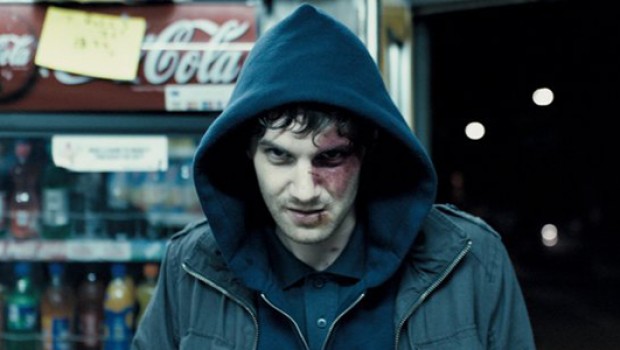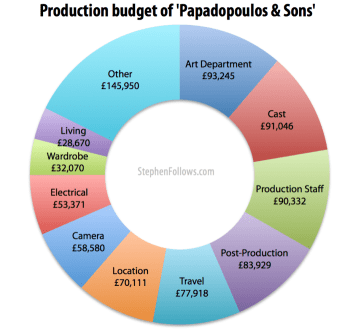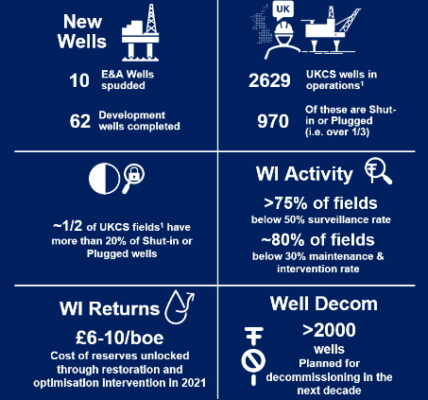The fact that it’s been 15 years since British writer/director Philip Ridley’s last cinematic outing (The Passion of Darkly Noon) isn‘t the only reason why there has been a growing sense of anticipation about his latest film, Heartless. That it was filmed entirely in East London, a locale rarely seen on the big screen, is interesting enough; that it transforms the Capital’s streets into a visually stunning background for a gripping urban fairy tale has had audiences buzzing ever since it appeared on the festival circuit last year. Add to the mix that it was filmed in high definition on a miniscule budget, and that it is the first British film to receive a simultaneous multi-platform release, and Heartless becomes a fascinating prospect indeed.
The film tells the story of Londoner Jamie (Jim Sturgess) who, following the death of his father, has become increasingly withdrawn; a condition not helped by the fact that he has a large heart-shaped birthmark across his face which makes him painfully self-conscious. When Jamie begins to see demons roaming the streets and causing random acts of violence, he begins a journey that will take him into the depths of the city-and his own psyche. Although it’s Jamie’s descent into hell that drives the narrative, it’s the mesmerising visuals that make the film so unforgettable.
“Philip [Ridley, the film’s director] was always very clear that this was the East End as a magical landscape,” DoP Matt Gray reveals. “He talked about wanting it to be beautiful and terrifying. The colour palette is based on an urban reality, and we just took it to extremes in various parts of the story so it became much more expressive, with a magical realist quality. The sodium colours that are in the street lamps all become vibrant and flame-like, and the greens of the fluorescent tubes become very deep and rich, and the two collide at the dramatic moments. We went for a baroque feel, vibrant and intense.
You must think how people are going to view your film – Heartless Director, Philip Ridley
Indeed, anyone who has seen Heartless will know that the East End has never looked so good but, ironically, it was this location that caused the biggest headache when it came to getting the project off the ground in terms of funding. “I’ve never seen East London as this grey, dour, depressing place,” explains Philip Ridley. “I’ve always seen it as this twinkling, burning landscape. When I went into meetings with financiers they said, ‘It’s going to look like Holby City, it’s going to look grey and boring!’ And I basically had to do a storyboard of photographs for the whole film, to say ‘Look, the opening is going to look like this; when Jamie crosses the road, don’t think of Ross Kemp in Eastenders crossing Albert Square!’ I took something like 200 photographs that went through the visual look of the film. And when people started to see it like that they said, ‘OK if you can achieve that then we’re really interested.’”
For both Gray and Ridley, the only way to achieve this intense cinematic look was by shooting Heartless in high definition. “We used the Panavision Genesis,” says Gray. “One of the reasons we were keen to go down that route is that we could shoot in lower light levels. Most of those urban street exteriors were shot with available light. It was also quite interesting because Philip had never shot with high definition before, but he fell in love with it during the process. And then with all the post-production afterwards, which since he’d last made a film had come on leaps and bounds, he got in there and was tweaking colours and lighting in the backgrounds. It was another palette for him.”
When it comes to the debate raging across the industry regarding the merits of film versus digital, Ridley makes it clear into which ring he’s placing his hat. “I could never go back to film,” he states. “I’m totally converted. I know there are a lot of purists who say, ‘My God, how can you say that? The textural quality of film [can’t be matched]’. And I think, ‘Sod that!’ Aesthetically, I like the look of digital filmmaking. I don’t find it ugly or vulgar. I find it beautiful. If it’s projected digitally, you get deep velvety blacks that you wouldn’t get on film, and such crystalline quality, it really sucks you in. And I designed the whole of Heartless to work as a digital screening; it’s like opening a jewel box.”
The days when you could make a film and make your money back on the art-house market [are gone] – Philip Ridley
Gray, on the other hand, is more diplomatic. “With digital, what’s exciting is that it lends itself to having a strong look. For example, if I was shooting a purely naturalistic film, I think film still has the edge. With the subtleties in flesh tone and in expressing colour and things like that, film is still far superior. But when you know you’re going to be giving the film a strong visual identity, then high definition lends itself to that.”
The cinematography of Heartless didn’t just come down to directorial vision or the possibilities afforded by digital technology, however. Interestingly, the changing film landscape and shifts in audience expectations also had a direct impact on the look of the film, from the initial idea through to the shoot itself. “The days when you could make a film and make your money back on the art-house market [are gone],” reflects Ridley. “It’s the language of the multiplex now. I’ve found a way of making this landscape exciting for me. With Heartless I think I’ve found a way of saying, ‘Well look, I can still do a bit of what I want to do here and get some interesting ideas through, but presented in a way that people will enjoy en masse.”
One of the ways in which Ridley hopes Heartless will appeal to a modern audience is in his limited but high-impact use of visual effects, something which, like shooting in HD, is all new to him. “All the set pieces were meticulously storyboarded, primarily because they were employing special effects. And it was the first time I’d ever done that. It was very nerve-wracking for me to let go of some aspects of the film, because I’d grown up with the old Jean Cocteau thing of, ‘If you can’t do it in camera then don’t do it!’ So for me to have these hoodies running around with black socks over their faces with red dots on, in the hope they were going to look like the demons I wanted by the end of the film, was pretty nerve-wracking!”
We have to adapt the grammar [of film] for different screens – Heartless DoP, Matt Gray
Nerve-wracking indeed, when you consider that these demons form not just the dramatic heart of the film, but also dictated much of its aesthetic. “[I wanted] the visual look of the demons to be at once menacing and seductive,” says Ridley. “Once we’d got that, so much fell into place. I painted the skin of the demons a very light, ghostly green and that is what started the colour-coding of the whole film. Everything to do with the demons and that side of the story is green; the green of the corridor to Papa B’s [the demon overlord played by Joseph Mawle], the green of the weapons man’s coat. And everything to do with reality is red; the red of the darkroom, the red of the birthmark, the red of Jamie’s T-shirt. It all had its genesis in the demons.
“It was a way of achieving what I wanted [but] yes, I wanted to do something I hoped would get through to an audience,” Ridley continues. “I didn’t manipulate anything in the script to accommodate that, I just hoped that the script was going to achieve that. The one thing that’s always been very important to me in filmmaking is high production values; I’ve always been very keen to make films look very polished.”
It’s true that Heartless looks like a film blessed with much larger resources. And that is in no small part due to the efforts of Gray, who brought to bear all of his television experience on the shoot. “Philip is a very strong visual director, and the idea was to service his vision and bring something of me into it as well,” says Gray. “It was to try and find this world that Jamie was haunted by and caught up in. That was a lot to do with the choices of where we placed the camera; even the day interiors were shot on a set that Ricky [Eyres, the production designer] built. We were clear from the outset that even with the day interiors, you got the feeling that you were in an urban flat, and that the light is trying to permeate the interiors and doesn’t quite reach the corners. Even when it is daytime, inside it feels a little gloomy.”
“It had to be lit very quickly, so nothing could be discovered in the moment,” explains Ridley. “We had to know exactly how we were going to go along and shoot this film; everything had to be meticulously planned. Matt is incredible, and he’s also unbelievably quick. We moved like the clappers through the film, and he just did it. I was shooting scenes before we had chance to draw breath.”
Of course, even though limited resources were a major contributing factor to the overall look of Heartless, the same can be said for the making of any film. One thing that makes Heartless rather different, however, is the fact that it is being released in select cinemas, then on DVD and Blu-ray, Video On Demand, Rental and Download To Own just two days later. This multi-platform release is the first of its kind for a British film, and was a major factor in determining the movie’s visual identity.
“You must think about how, over the long term, people are going to view your film,” explains Ridley. “The one thing I was saying all the way through Heartless is, ‘This is going to look knockout on Blu-ray’. I think that’s the way people enjoy seeing films now. I think everyone wants to see a film and own it, and having something that is visually enjoyable to look at.”
And the fact that the majority of people would be experiencing Heartless on a smaller screen was something that Gray also had to keep in mind throughout the whole shoot. “I watch films on my iPod,” he admits, perhaps surprisingly. “There is something that is lost on the small screen, that is about the experience that envelops you. But if you’re watching something that’s 60-feet across but you’re further away from it, it’s relative. I just think that’s part of the modern world, that people will be watching films on different formats. “I always shoot for the story,” he continues. “Sometimes there are scenes within the story that you want to explore the world of the story; you want to be able to allow the landscapes in and place the audience within that context. And there are other times when you want to be very intense, and you want the audience to be very close emotionally to it. So, essentially, the way I work is that you pull it all out of the script.”
I’d be interested in making a film specifically for the iPod. It becomes a different experience… – Heartless DoP, Matt Gray
That’s not to say that there weren’t some concessions to those lucky enough to see Heartless at the cinema. “We tried to make sure we weren’t too close too quickly, and we did try to remind ourselves that we were on the big screen! It’s tricky. But films work on the small screen as well, particularly if you’re getting the language of the story right. You have to always have the audience in mind, and ensure you’re telling the story for them.”
Indeed, Gray seems excited by changing audience habits and, rather than bemoaning the death of big-screen cinematography as an art form, seems enthusiastic about embracing new challenges that lie ahead. “I’d be interested in making a film specifically for the iPod,” he says. “It becomes a different experience, it’s almost like a personal poem to an audience because it’s just a single viewer with very close sound. It becomes a much more intimate experience as opposed to the cinema experience, which is collective. It’s an interesting time, and it might be that we have to change the grammar, or adapt the grammar, for the different screens.”
Of course, the flip side of this changing industry is the fact that big event films like Avatar are dominating cinema screens, as audiences flock to have a visual experience that they can’t yet achieve in their living room. But Gray doesn’t believe that these event movies are indicative of the future of cinema. “At the end of the day, telling each other stories is an innate part of our being. It’s something we will always do to help make sense of the world. I think there will be a place for these event films, and I enjoyed Avatar as much as anyone else! But there will always be a place for intimate stories that explore the human experience in a different way to one that just excites you visually, or takes you on such a vast journey.”
Ridley, too, thinks that there will always be room for varying types of movies, even if he does think that audience habits will change the traditional approach to distribution. “I think that, on the one hand, you have these big 3D spectacles that you have to go to the cinema to see, and the rest are going to come out with a very short release but the main experience of them will be home cinema,” he says. “The film industry is on a cusp, of really deciding where we’re going to go. I’ve been going to the cinema less and less. My friend has got a fantastic home cinema system, and if I had the choice of watching a new film there or sitting behind somebody eating a hamburger, with mobile phones lighting up everywhere, I would choose the home experience! I think it’s a very exciting period to be releasing films. I think that Heartless got in there first [with the multi-platform release], but I think you can start to see that happening. People want to shrink the amount of time a film is in the cinema, because there is more money to be made in the long-term life of a Blu-ray release.”
And Ridley is also adamant that a new distribution structure will be a much-needed saviour for independent films. “That’s the lifeblood of cinema. All the bigger films get their inspiration from smaller films. You look at Spielberg, you can see Jean Cocteau. You look at David Lynch, you can see Bunuel. We’ve got to find a way of keeping the lifeblood going, and this is a very interesting way to do it.”
Independent filmmakers certainly have much to gain from multi-platform releases, with young directors being able to simply pick up a camera, shoot a movie and find success on DVD with very little financial risk. But how does Gray, a cinematographer with experience and formal training, feel about these grass-roots methods? “I think that kind of thing is exciting because it allows people to express themselves,” he says. “What you don’t want, though, is for the industry to be completely deskilled so that the quality of what you’re seeing-not just the technical quality but in terms of the film grammar and language-that history of film and that way of expressing stories doesn’t get lost. You want filmmakers to come through that are rich and have a knowledge of what’s gone before, so they know where their voice fits and how relevant it is.
“I think, increasingly, film schools are important because they allow people to put a context to their work, and [it] gives them the freedom to explore and experiment,” Gray continues. “Because there’s no room to make mistakes; within the professional environment you’re expected to get up to speed very quickly. I think having a couple of years to explore and be with a collective group of people who will then become your extended community of filmmakers is really important, otherwise you end up with a narrow expression of culture. What you’re hoping to do is give people time to explore their own voices and ideas.”
And that’s certainly something that Gray and Ridley have achieved with Heartless. It’s a surprising film, both in terms of its story and its unforgettable visuals, and its director is clearly thrilled with the result. “I want people to come away from the film having enjoyed the ride,” Ridley surmises. “It’s very much a love it or hate it film. You either get it or you don’t. It should be like a dream. My favourite films are those that develop their own logic; it’s the most perfect medium for creating that. The logic of a dream is really what it’s all about.”












